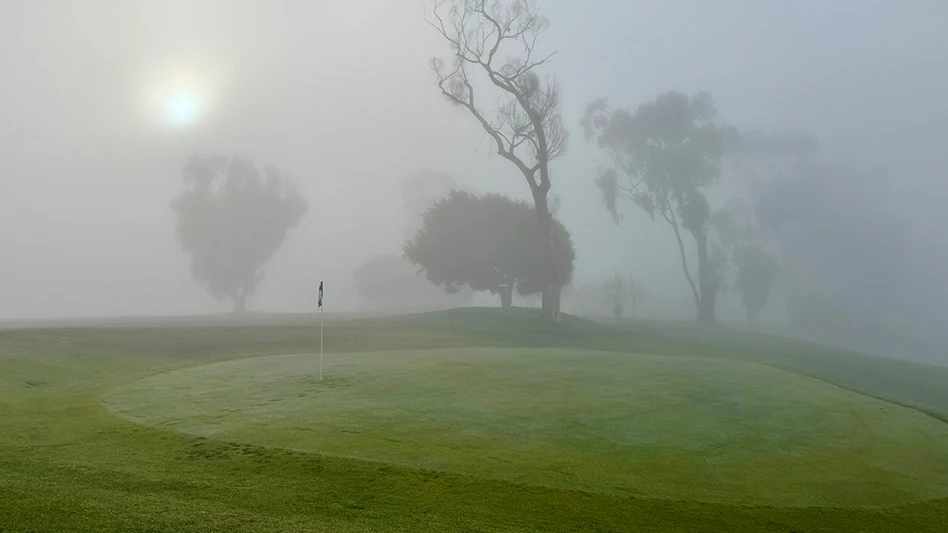|
|
Have you ever had a pipe or fitting break and when you went to isolate it you came across a group of green valve boxes and had to flip three or four lids before you found the isolation valve, because two were wire splices and one was a quick coupler? Have you ever excavated a trench of broken wires and all you see is red or red and white and it takes forever to match up the wires to figure out which wire goes to the sprinkler that is not working? An easy way to avoid these problems is with color coding. Color coding is easily accomplished in golf course irrigation systems, and the best part is it does not cost anything extra. Color-coding wire has been around for some time, but there are many different ways it can be done. If you have a hard-wired system to communicate between the central controller and the field controllers or the central controller and the field decoders, there will normally be more than one communication path. Each of these paths should be a different color, breaking the golf course into two, three or four sections. With decoder to sprinkler wires, the wire color should be the same as the decoder wire. This is especially helpful when using multiple station decoders. When using field controllers and valve-in-head sprinklers, different colors can and should be used for green/tee control wire, fairway/rough control wire, extra wires, green/tee common wire and fairway/rough common wire. But you do not have to stop there. There are roughly 14 different colors of #10 AWG to #16 AWG wires available. And if that's not enough, you can add a colored stripe to them to give you many more different wire identifiers. One really important place to use color-coded wires is when replacing an old automatic field controller system with a new one. Don't have any of the new wires be the same colors as the old wires. That way when you damage wires you know immediately if they are the old system or the new system. Another area to use color coding is with valve boxes. Today's irrigation systems have many different valves: lateral isolation, mainline isolation, drain, electric, air vacuum/release, pond fill and quick couplers. Additionally, valve boxes are used for grounding rods and wire splices. There are different types of wire splices: power, common, communication and control. Power wire can be of different voltages; 120 volt, 220 volt and 480 volts. Each of these various valves or splices can be identified with a combination of different color valve box covers sizes. For example, a valve box color scheme for a golf course irrigation system may look like the above image.
Regardless, color coding is a great way to quickly determine what a valve box contains when you have a break and need to shut the valve off quickly they save time. When you have a broken wire, the color coding will save you invaluable time in determining what wires you need to be concerned with based on where the sprinkler is not working.
|

Explore the January 2012 Issue
Check out more from this issue and find your next story to read.
Latest from Golf Course Industry
- Beyond the Page 65: New faces on the back page
- From the publisher’s pen: New? No way!
- Indiana course upgrades range with synthetic ‘bunkers’
- Monterey Peninsula CC Shore Course renovation almost finished
- KemperSports and Touchstone Golf announce partnership
- PBI-Gordon Company hires marketing manager Jared Hoyle
- Mountain Sky Guest Ranch announces bunker enhancement project
- GCSAA names Joshua Tapp director of environmental programs

.jpg)







